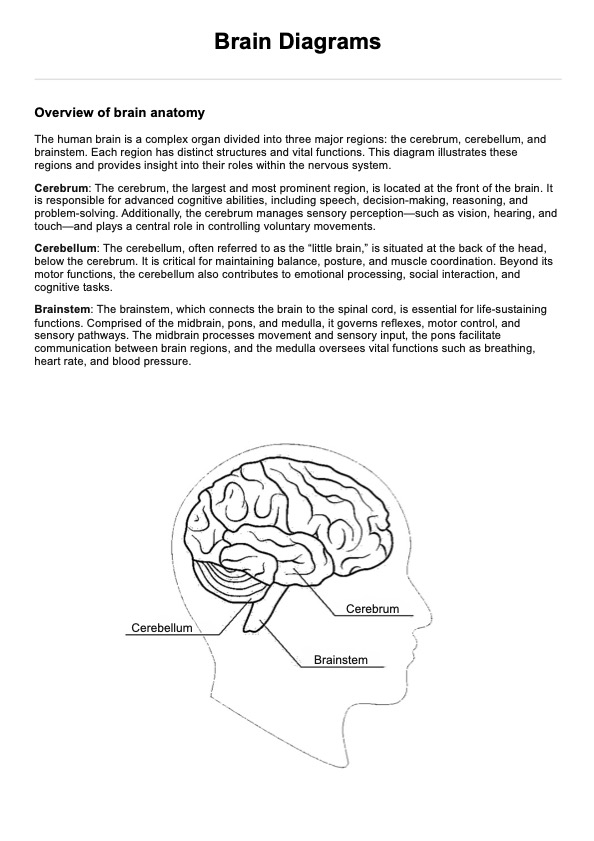In psychology, brain structure refers to the organization and anatomy of the brain, which is crucial for understanding its functions and processes. The brain is primarily divided into three main parts: the cerebrum, cerebellum, and brainstem. The cerebrum is the largest and responsible for higher cognitive functions, sensory processing, and voluntary movements.

Brain Diagrams
Looking for a brain diagram you can use as a resource? Click here for a free template and suggestions on how to use it!
Brain Diagrams Template
Commonly asked questions
The four lobes of the brain are the frontal, parietal, temporal, and occipital. The frontal lobe, located at the front, is involved in decision-making, problem-solving, and motor control. The parietal lobe, situated at the top, processes sensory information related to touch and spatial awareness. The temporal lobe on the sides is essential for auditory processing and memory, while the occipital lobe at the back is primarily responsible for visual processing.
Different parts of the brain control various functions: the frontal lobe function involves higher cognitive functions and voluntary movements; the parietal lobe processes sensory information; the temporal lobe is involved in hearing and memory; and the occipital lobe interprets visual information. Additionally, structures like the amygdala regulate emotions, the hippocampus is crucial for memory formation, and the thalamus is a relay station for sensory and motor signals.
EHR and practice management software
Get started for free
*No credit card required
Free
$0/usd
Unlimited clients
Telehealth
1GB of storage
Client portal text
Automated billing and online payments











